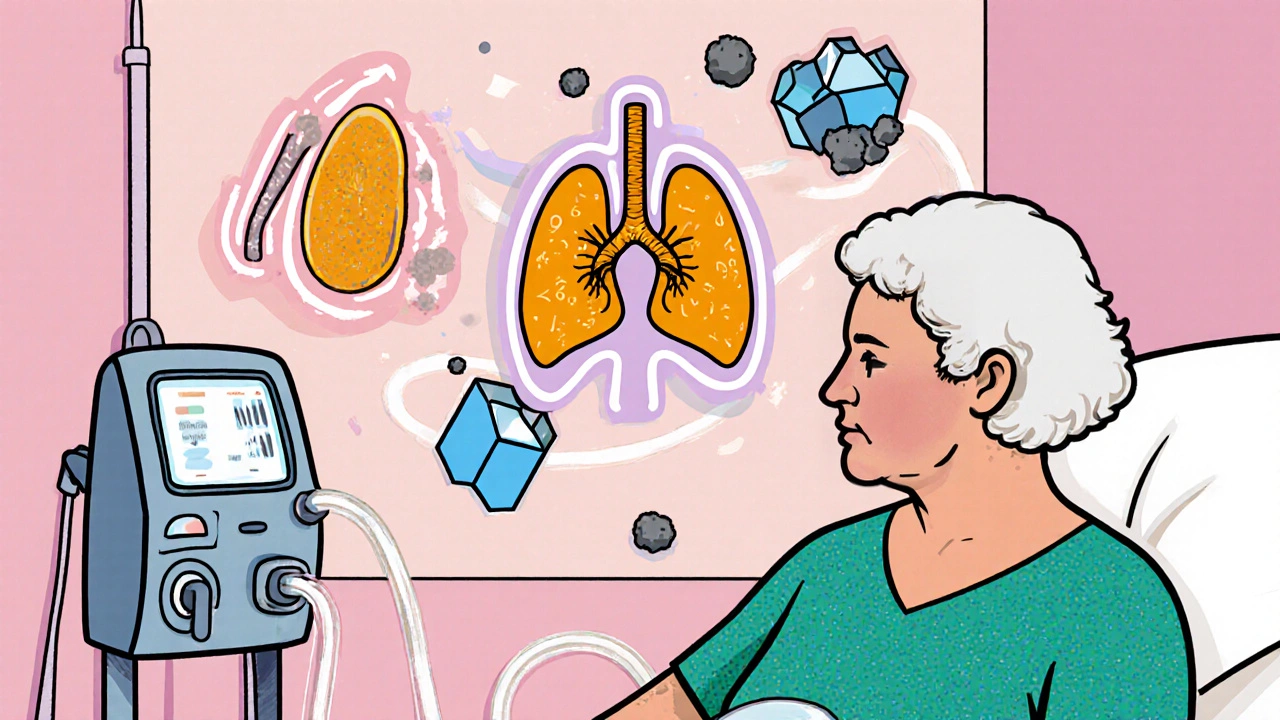Calcium Metabolism: How It Shapes Your Health
When exploring Calcium Metabolism, the process by which the body absorbs, distributes, and regulates calcium to support bones, nerves, and muscles. Also known as calcium homeostasis, it plays a central role in maintaining skeletal strength and preventing stone formation, you’ll quickly see how it ties to Bone Health, the structural integrity of your skeleton, Kidney Function, the organ’s role in filtering excess calcium, Vitamin D, the fat‑soluble vitamin that boosts calcium absorption in the gut, and Parathyroid Hormone, the hormone that fine‑tunes calcium levels in blood and bone. Understanding these links helps you see why a tiny mineral can affect everything from your posture to your kidney stones.
Why Understanding Calcium Metabolism Matters
Ever wonder why doctors stress calcium and vitamin D supplements after a fracture? That’s because calcium metabolism directly fuels bone remodeling – the constant break‑down and rebuilding that keeps bones strong. When the balance tips toward loss, you’re more likely to develop osteoporosis, and fall prevention becomes a must‑have strategy. Our post on fall prevention for osteoporosis shows exactly how keeping calcium in check reduces fracture risk.
Kidney stones are another side effect of a mismanaged calcium system. When calcium levels spike in urine, they can combine with oxalate or phosphate and crystalize. The article about smoking’s impact on uric acid touches a related point: lifestyle choices can push mineral balances over the edge, leading to painful stones or gout. By regulating calcium through diet and hormones, you can lower that risk.
Vitamin D isn’t just a sunshine vitamin; it’s the key that unlocks calcium absorption in the intestines. Without enough D, even a calcium‑rich diet won’t raise blood levels, prompting the parathyroid glands to release more hormone. This can steal calcium from bone, weakening it over time. Our guide to vitamin D benefits links directly to the broader conversation on calcium metabolism.
Parathyroid hormone (PTH) acts like a thermostat. When calcium drops, PTH tells bones to release calcium, kidneys to re‑absorb it, and the gut to increase absorption via active vitamin D. Too much PTH, however, can cause chronic bone loss and kidney calcifications. The interplay of PTH, calcium, and vitamin D is a classic triad that shows how tightly these entities are woven together.
Beyond bones and kidneys, calcium is vital for muscle contraction and nerve signaling. Low calcium can cause muscle cramps, tingling, or even cardiac arrhythmias. That’s why patients with chronic obstructive pulmonary disease (COPD) often need careful monitoring of electrolytes – the article on COPD and exercise notes that staying active can help maintain overall mineral balance, including calcium.
Several of the articles in this collection touch on conditions where calcium metabolism plays a hidden role. For example, joint damage can stem from misaligned bone remodeling, and the post about joint damage at work explains how preserving calcium balance supports joint resilience. Likewise, the piece on diabetic peripheral neuropathy highlights how calcium channels influence nerve health, showing the mineral’s reach into the nervous system.
When you look at medications, many interact with calcium pathways. Certain antibiotics, like Norfloxacin, can chelate calcium and affect its absorption – a detail covered in the Noroxin comparison guide. Cancer drugs such as Chlorambucil may impact bone marrow, indirectly influencing calcium storage. Knowing these links helps you ask the right questions when prescribing or taking meds.
From a lifestyle perspective, supplements like safflower oil or liv‑52 syrup are often marketed for heart or liver health, but they can also affect calcium metabolism indirectly through anti‑inflammatory effects. The safflower supplement guide points out that reducing inflammation may improve calcium utilization in bone.
All these threads – bone health, kidney function, vitamin D, PTH, medication interactions, and lifestyle factors – weave together into a single, powerful picture of calcium metabolism. Below you’ll find a curated set of articles that dive deeper into each of these angles, giving you practical tips, scientific explanations, and actionable steps to keep your calcium system running smoothly.

